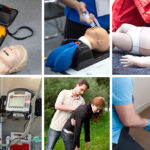An earthquake can occur at any time. No matter how prepared you are for emergencies, you can never be prepared for the unpredictable. Protecting your loved ones during an earthquake requires careful planning and preparation. Here are some steps you can take to protect your loved ones during an earthquake:
- Educate your loved ones about earthquakes: Make sure everyone in your family knows what to do before, during, and after an earthquake. Teach them to drop, cover, and hold on when they feel the ground shaking.
- Prepare an emergency kit: Make sure you have an emergency kit ready with enough supplies for at least three days. This should include food, water, first-aid supplies, and any medications that your loved ones may need.
- Secure your home: Secure heavy objects such as bookcases, cabinets, and TVs to the wall. Check your home’s foundation, walls, and roof for any structural weaknesses or damage. It could cause injuries during an earthquake.
- Have a plan: Create an emergency plan with your loved ones. Include a designated meeting spot in case you get separated during the earthquake. Make sure everyone knows how to turn off gas, water, and electricity.
- Practice earthquake drills: Practice earthquake drills with your family. Ensure that everyone knows what to do in case of an earthquake. This will help them react quickly and calmly during a real earthquake.
- Stay informed: Stay informed about earthquake risks and updates in your area. Follow local news and social media channels for updates.
Take First Aid and CPR Courses
Taking First Aid and CPR courses from American CPR Care can be incredibly helpful in earthquake emergencies. Here’s how:
- Immediate response: In the event of an earthquake, injuries may occur. Having First Aid and CPR knowledge allows you to provide immediate help to those who are injured.
- Assessing injuries: Injuries from earthquakes can range from minor to severe. Knowing how to assess and prioritize injuries can help you determine who needs medical attention first.
- Proper care: First Aid and CPR training teaches you how to provide appropriate care for various injuries. For example, wounds, fractures, and shock. This knowledge can be critical in saving lives and reducing the risk of further injury.
- Safety measures: In earthquake emergencies, safety measures are essential to prevent further injuries. First Aid and CPR training teaches you how to secure the scene and minimize further risks.
- Teamwork: In larger-scale earthquake emergencies, it’s common for first responders to be overwhelmed. Knowing First Aid and CPR skills can make you a valuable member of a rescue team and help save more lives.

Devise an earthquake safety plan
The best earthquake safety plan is one that is comprehensive, well-rehearsed, and tailored to your specific needs and circumstances. Here are some key elements to include in your earthquake safety plan:
- Prepare your home: Secure heavy items such as bookcases, appliances, and furniture to the wall. Ensure your home’s structure is safe and up to code. Store heavy and breakable items on lower shelves and ensure that emergency supplies are easily accessible.
- Create an emergency kit: Assemble an emergency kit with enough food, water, and supplies to last for at least three days. Be sure to include first aid supplies, flashlights, and a battery-powered radio.
- Know the safe spots: Identify the safest places in your home, such as under sturdy furniture or against interior walls away from windows. Ensure that everyone in your household knows where these safe spots are and what to do during an earthquake.
- Have an evacuation plan: Identify evacuation routes. Make sure everyone in your household knows how to safely evacuate your home. Establish a meeting point outside your home in case of separation.
Organize disaster supply kits
Organizing disaster supply kits for earthquakes can be a crucial step in earthquake preparedness. It is quite similar to a first aid kit. Here are some essential items to include in your earthquake disaster supply kit:
- Water: Store at least one gallon of water per person per day for at least three days.
- Non-perishable food: Store enough non-perishable food to last at least three days. Canned goods, protein bars, and dry foods like pasta and rice are good options.
- First aid kit: Include a well-stocked first aid kit. Include gauze, antiseptic wipes, bandages, and other medical supplies.
- Flashlights and batteries: Make sure you have plenty of flashlights and batteries. Consider purchasing battery-operated lanterns for additional lighting.
- Radio: Include a battery-operated or hand-crank radio to stay informed about news and emergency updates.
- Personal hygiene items: Include items such as hand sanitizer, toilet paper, and wet wipes.
- Medications: Store any necessary prescription medications and medical supplies.
- Cash: Keep some cash in your disaster supply kit in case electronic payment methods are unavailable.
- Important documents: Keep copies of important documents, such as identification, insurance policies, and emergency contact information in a waterproof container.
- Emergency tools: Include tools such as a wrench, pliers, and a can opener.
Once you have gathered these items, organize them in a sturdy, waterproof container that is easy to transport. Store the kit in a location that is easily accessible in case of an earthquake.
Conclusion
Overall, taking First Aid and CPR courses from American CPR Care can help you become better prepared to respond to an earthquake emergency. By knowing how to assess injuries, provide proper care, and take necessary safety measures, you can help protect yourself and others during an earthquake.
Remember that earthquakes can happen at any time and without warning. By taking these steps, you can help protect your loved ones and minimize the risk of injury or damage during an earthquake.







